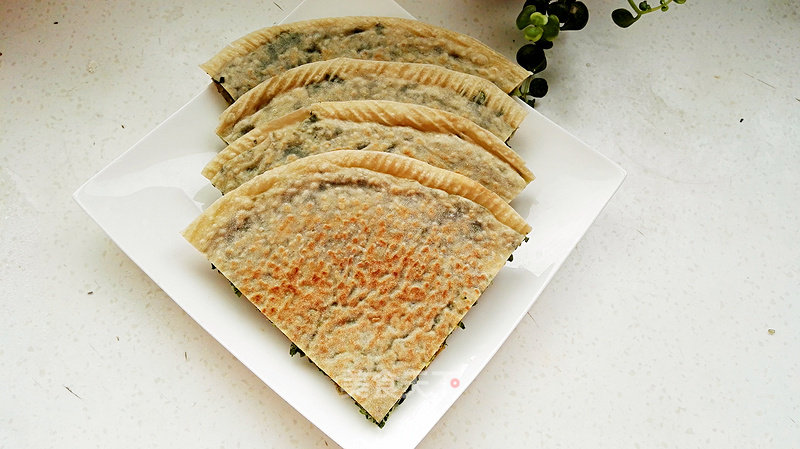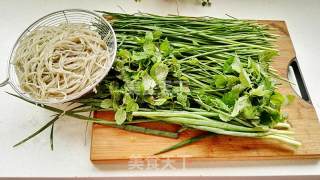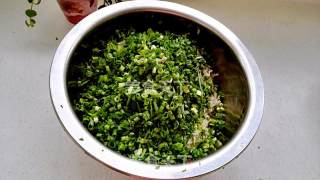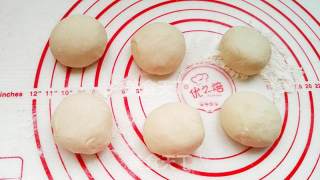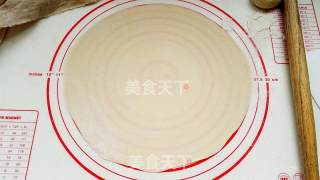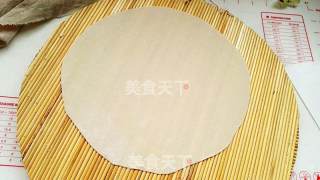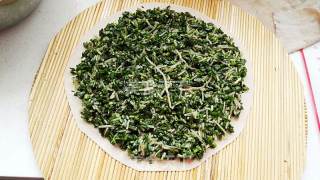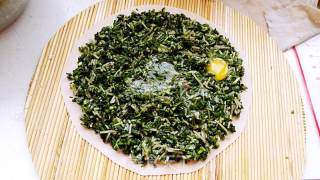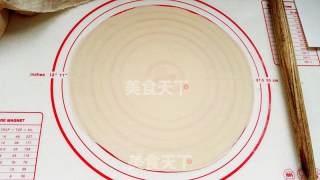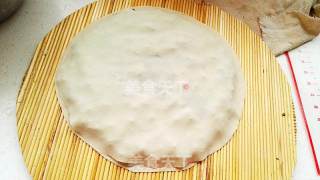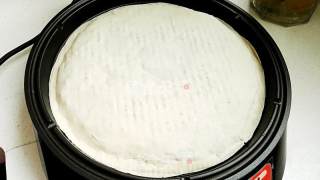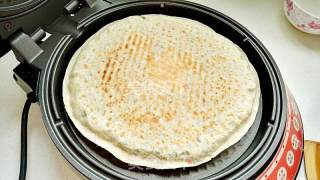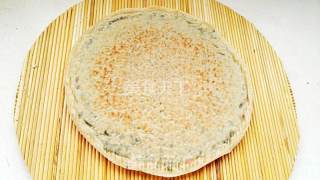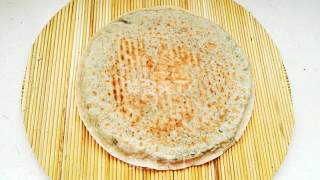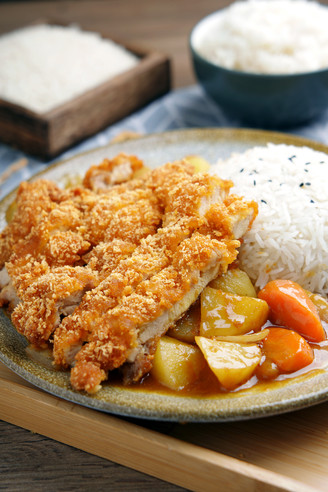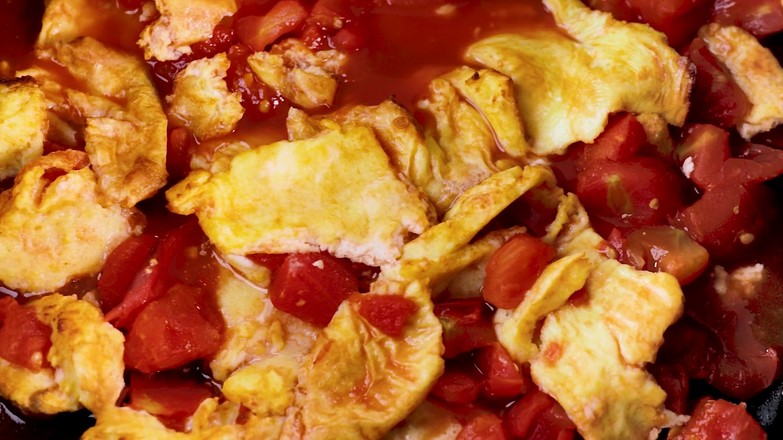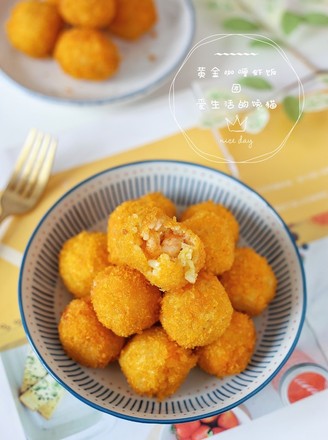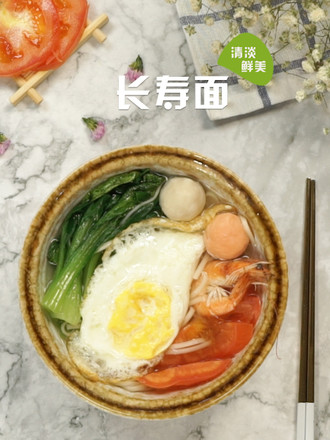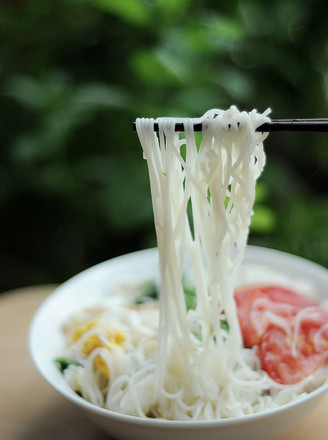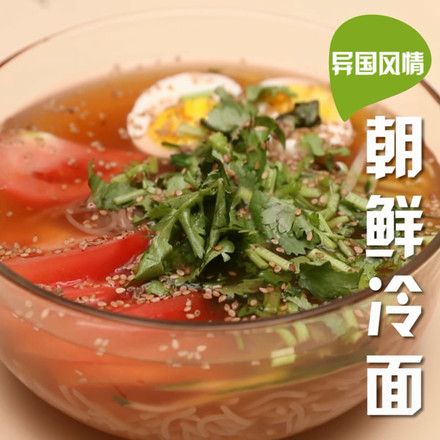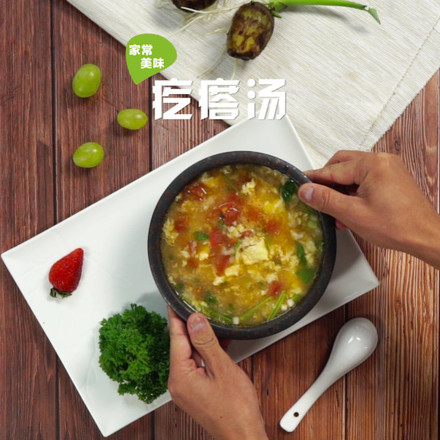Cabbage Steamed Stuffed with Egg, Chives and Vermicelli (zhumadian Specialty)
1.
Soak the vermicelli in advance and control water for later use. Wash the leeks, spring onions, ginger, ageratum, ten coriander and control water for later use.
2.
Chop all the vegetables and place them in a pot.
3.
Pour in sesame oil and mix well (lock in water), then add salt and thirteen incense, mix well and season for later use.
4.
Pour the flour into the bowl, put a little salt, pour the water and use the chopsticks to stir into the dough without dry powder, use your hands to form a three-light dough, cover and wake up for about half an hour, and knead the dough smoothly. (Flour:water=100:55 or so, the earlobe is soft and firm.) (I prepare a lot of dough, only a small part is enough.)
5.
Take a part of the dough and knead it into a long strip, drag it into small doses, and knead it separately and set aside. (Generally, about 50 grams of a noodle is enough, mine is 40 grams, which is very thin.)
6.
First take 1 rolled leather, and cover the others with a damp cloth to prevent dry leather. Use a small rolling pin to roll it into a suitable size circle.
7.
Put the dough on the pan and pat.
8.
Take an appropriate amount of the adjusted filling and flatten it with chopsticks.
9.
Take an egg and knock it into a small mouth, and throw it evenly on the dish. (You can also knock the eggs in a bowl with chopsticks and stir them evenly, and then pour them evenly. This kind of egg liquid is less oily, lighter and more nutritious.) (You can also stir-fry the egg liquid cold and chop it into the filling, which is more fragrant, but I like less oil and lighter ones.)
10.
In addition, roll out the dough of the same size (it is almost fine, the dough is malleable, so it's smaller).
11.
Cover the stuffing.
12.
Press in a circle with your hands to prevent the filling from leaking.
13.
After the electric baking pan is preheated on both sides, put the steamed bun into double-sided heating and bake until the two sides are slightly yellow. (In order to avoid uneven heating, turn over in the middle), this step is not to add oil, suitable for the current light diet requirements. (When cooking the steamed bun, choose different buttons according to the thickness of the steamed bun. If the steamed bun is thicker, it will be better for roasting, and if it is thinner, it will be better for roasting.)
14.
On both sides of the kang system burnt flowers, good vegetable buns on the kang.
15.
Finished product. You can take it and eat directly (our family is one person, one person, hehe!)
16.
Finished product.
17.
You can also cut into smaller pieces and eat as you please!

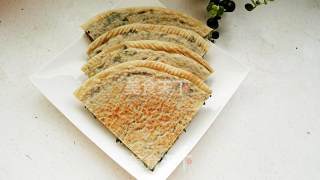
Tips:
1. Dough flour: water = 100: 50 or so, the earlobe is soft and firm.
2. Generally 50 grams-60 grams of a noodle is enough, mine is 40 grams, which is thin. )
3. Wash the vegetable stuffing in advance and dry it. The stuffing can be combined according to personal taste. When mixing the stuffing, first add oil and mix well (lock the water) and then add salt to prevent water from the vegetables.
4. You can also knock the eggs in a bowl with chopsticks and mix them evenly, then pour them evenly. This egg liquid is less oily, lighter and more nutritious. (You can also fry the egg mixture cold and chop it into the filling, it will be more fragrant, but I like it with less oil and light.)
5. The steamed bun will be baked according to the thickness of the steamed bun. If the steamed bun is thicker, it will be better, but if it is thinner, it will be better.
6. If you don’t have an electric baking pan, you can use a thick-bottomed frying pan. The method is: heat the frying pan to medium-low heat, put the vegetable buns on the kang, and turn the kang on the other side.
7. Why are we called "Ta Cai Mo"?
Because the freshly baked steamed buns are a bit hard and the vegetable fillings are half-raw, put the steamed buns in a breathable container and stack them one by one. Use the rest of the heat to make the vegetables softer and more cooked. This process is commonly known as "collapse", so cooking steamed bun is called "collapsed vegetable steamed bun". Did you guess right? "Ta Cai Mo" is very simple, can you learn it after reading it?

